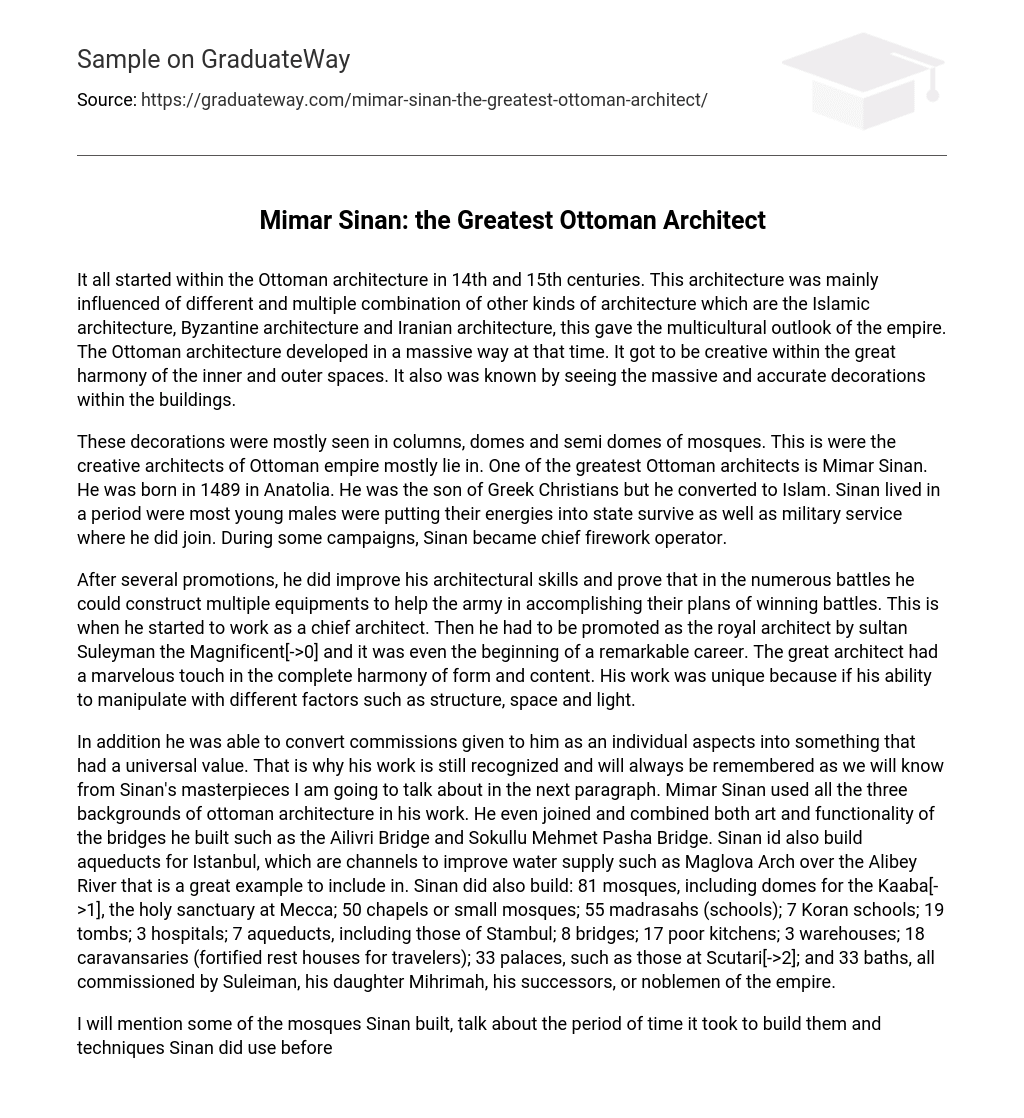Starting in the 14th and 15th centuries, Ottoman architecture emerged as a fusion of various architectural styles, including Islamic, Byzantine, and Iranian. This combination created a multicultural aesthetic for the empire. The Ottoman architecture flourished during this period, showcasing a remarkable harmony between the interior and exterior spaces of buildings. The structures were also notable for their ornate and meticulous decorations.
The intricate ornamentation found in mosques is primarily observed in columns, domes, and semi domes. These skilled craftsmen primarily came from the creative architects of the Ottoman empire. Among the greatest architects of the Ottoman empire is Mimar Sinan, who was born in Anatolia in 1489. Even though he was raised in a Greek Christian family, Sinan converted to Islam. He lived during a time when many young males focused on serving the state and participating in military activities, which Sinan also engaged in. In fact, during certain campaigns, Sinan served as the chief firework operator.
After receiving several promotions, he showcased advancement in his architectural abilities and validated his capacity to build diverse equipment for aiding the army in securing triumphs on the battlefield. At this juncture, he commenced his role as a chief architect. Ultimately, Sultan Suleyman the Magnificent promoted him to the prestigious position of royal architect, which marked the initiation of an extraordinary professional journey. This gifted architect possessed an exceptional talent for attaining immaculate harmony between form and substance. His creations stood out due to his mastery in manipulating different elements such as structure, space, and light.
In addition, Mimar Sinan possessed the ability to transform individual commissions into something of universal value. This is why his work remains recognized and will always be remembered, as evident from Sinan’s masterpieces that I will discuss in the following paragraph. Sinan incorporated the three backgrounds of Ottoman architecture in his work, seamlessly blending art and functionality in structures like the Ailivri Bridge and Sokullu Mehmet Pasha Bridge. Furthermore, Sinan contributed to the water supply of Istanbul by constructing aqueducts such as the Maglova Arch over the Alibey River, which serves as an exemplary creation. Additionally, Sinan constructed numerous mosques (including domes for the Kaaba in Mecca), chapels, madrasahs, Koran schools, tombs, hospitals, aqueducts, bridges, poor kitchens, warehouses, caravansaries, palaces (like those at Scutari), and baths. These structures were commissioned by Suleiman, his daughter Mihrimah, his successors, or noble members of the empire.
In this text, I will discuss the mosques designed by Sinan, including the time taken to build them and the techniques employed during their construction. The mosques are categorized based on the spatial typology of domes supported by hexagonal, square, and octagonal systems.





